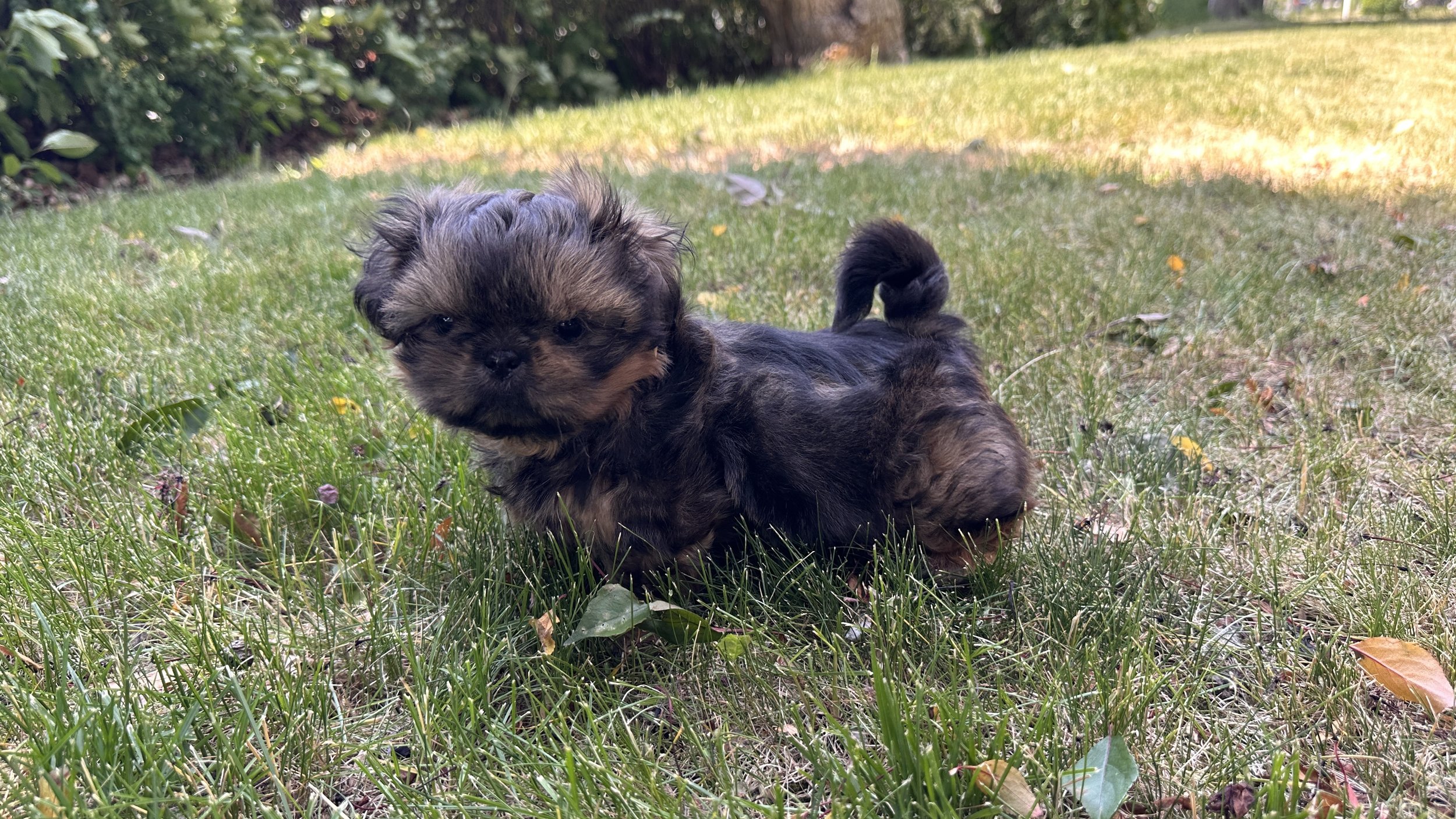Positive Reinforcement: 8 Foolproof Tips for Gently Training a 2-Month-Old Puppy
Essential Techniques for Raising a 2-Month-Old Puppy
1. Establish a Safe and Secure Foundation from the Start
A 2-month-old puppy explores the world with curiosity, but also with a hint of apprehension. Behaviorists recommend associating every new experience with something positive.
Practical Example: If your puppy hears a sudden noise (like a door slamming), speak to them softly and give them a treat once they calm down. This helps them learn to manage unexpected events.
2. Redirection is Your Best Friend
At two months old, puppies explore everything with their mouths: your shoes, your fingers, your furniture. Instead of scolding them, redirect their energy toward an appropriate toy.
Example: If they start nibbling on your fingers, gently say, "No, not this," and place a toy in their mouth while saying, "Yes, this is for you!" Immediately praise them for using the toy.
3. Use Rewards to Reinforce Good Behavior
At this age, puppies quickly learn what earns them treats or cuddles. Be generous with your praise!
Example: If your puppy sits naturally or looks at you calmly, reward them. This encourages them to repeat these desirable behaviors.
4. Keep Training Sessions Short and Frequent
A 2-month-old puppy has a short attention span (and an irresistible urge to play). Training sessions should last 5 minutes, 3–4 times a day.
Basic Behaviors to Teach at Two Months
1. House Training
Method: Take your puppy outside after every meal, nap, or play session. When they relieve themselves in the correct spot, praise them as though they’ve just won a gold medal. If there’s an accident indoors, clean it up calmly—at this age, they’re too young to understand scolding.
2. Recall (“Come”)
Method: Kneel down and call your puppy joyfully by their name. When they come to you, reward them with treats and cuddles. Turn it into a fun game to build their enthusiasm for coming to you.
3. Managing Biting
Method: If your puppy bites too hard, let out a small yelp (like another puppy would) to signal that it hurts. Then, offer them a toy and reward them when they chew on it instead.
4. Controlled Socialization
At this age, it’s essential to expose your puppy to people, sounds, and other animals in a safe and controlled environment. Associate every interaction with treats or praise to create positive experiences.
Specific Methods to Encourage Good Behavior
1. Staying Calm During Mealtime
Tip: Feed your puppy in a quiet area and reward their calm behavior before setting down the food bowl. This teaches them that being calm gets them what they want.
2. Learning to Be Alone
Gradual Method: Leave your puppy alone in a room for a few minutes with an interactive toy. Gradually increase the time. When you return, avoid making a big fuss to prevent reinforcing separation anxiety.
3. Saying “No” Gently
A 2-month-old puppy won’t understand long explanations. Use a short, firm word like "No," immediately followed by redirection.
Example: If your puppy climbs on the couch, say "No," then guide them to a cozy mat and reward them for staying there.
The Importance of Positive Reinforcement at Two Months
Positive reinforcement is the foundation for building trust with your puppy. At this age, they’re like a blank canvas: your patience and reactions will shape the dog they’ll become.
With gentleness, treats (in moderation—puppy tummies are delicate!), and lots of patience, you’ll see just how quickly a 2-month-old puppy can learn and surprise you with their ability to understand what you want.
Final Note
Remember, a mischievous puppy is a curious puppy. So, instead of getting upset when they nibble on a sock, ask yourself: why are socks still lying around?
One Last Thought
A 2-month-old puppy is like a 2-year-old child: they run everywhere, test your limits, and steal your heart with just one look. So keep smiling and remember that in a few months, this adorable chaos will turn into a well-trained dog—all thanks to you.
Good luck (and have fun)!
— Maxime

